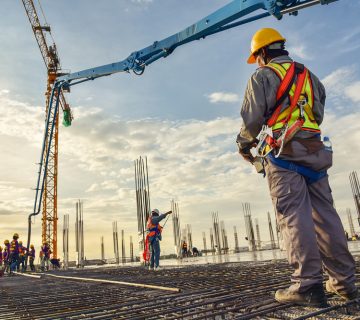High-profile construction projects often come with their own set of unique challenges and complexities. From large-scale commercial developments to iconic architectural endeavors, managing these projects requires careful legal planning and strategic foresight. For architects, contractors, and developers, implementing effective legal strategies is essential to navigate potential risks, ensure compliance, and achieve successful project outcomes. This blog explores key legal strategies that can help manage high-profile construction projects effectively.
1. Thorough Contract Negotiation and Drafting
Contracts are the backbone of any construction project, serving as the foundation for relationships between parties. For high-profile projects, the importance of clear and comprehensive contracts cannot be overstated. Here are essential aspects to consider:
- Define Scope of Work: Clearly outline the scope of work, including specifications, timelines, and deliverables. This minimizes misunderstandings and establishes expectations for all parties involved.
- Establish Payment Terms: Clearly define payment schedules, including milestones and conditions for payments. Addressing potential issues related to change orders or additional work is critical to prevent disputes.
- Dispute Resolution Mechanisms: Include provisions for dispute resolution methods, such as mediation or arbitration, to provide a structured approach for resolving conflicts that may arise during the project.
- Limit Liability: Consider including liability limitations in contracts to protect against unforeseen circumstances. Clearly outline responsibilities for delays, defects, and other potential issues.
2. Comprehensive Risk Management
High-profile construction projects often involve significant financial investments and heightened scrutiny. Implementing a robust risk management strategy is crucial for identifying, assessing, and mitigating potential risks. Key steps include:
- Conduct Risk Assessments: Perform thorough risk assessments at the outset of the project to identify potential legal, financial, and operational risks. This includes evaluating site conditions, regulatory compliance, and potential community impact.
- Develop a Risk Mitigation Plan: Create a risk mitigation plan that outlines strategies for addressing identified risks. This plan should include contingency measures to respond to unforeseen challenges that may arise during construction.
- Regular Monitoring and Review: Continuously monitor risks throughout the project lifecycle and adjust the risk management plan as needed. Regular review meetings with key stakeholders can help ensure everyone is aware of potential issues.
3. Compliance with Regulations and Standards
Navigating the regulatory landscape is essential for the success of high-profile construction projects. Compliance with local, state, and federal regulations ensures that the project meets all legal requirements and minimizes the risk of delays or penalties. Consider the following:
- Stay Informed: Keep abreast of changes in construction laws, building codes, zoning regulations, and environmental standards. Engaging with legal counsel who specializes in construction law can provide valuable insights.
- Engage with Regulatory Agencies: Foster open communication with local regulatory agencies throughout the project. Establishing positive relationships can facilitate smoother approvals and help address any compliance concerns early on.
- Environmental Considerations: Ensure that the project complies with environmental regulations, including those related to land use, water management, and air quality. Environmental assessments may be necessary to identify potential impacts.
4. Effective Communication and Collaboration
Communication is key to the success of high-profile construction projects. Establishing open lines of communication among all parties involved can help prevent misunderstandings and foster collaboration. Strategies include:
- Regular Meetings: Schedule regular meetings with project stakeholders, including architects, contractors, and clients, to discuss progress, address concerns, and review any changes to the project scope.
- Utilize Project Management Tools: Implement project management tools that allow for real-time updates and transparent communication. These tools can help streamline information sharing and enhance collaboration among team members.
- Document Everything: Keep detailed records of all communications, decisions, and changes made during the project. Thorough documentation can serve as a valuable resource in the event of disputes.
5. Prepare for Dispute Resolution
Despite best efforts, disputes may still arise during high-profile construction projects. Being prepared for potential conflicts is essential for minimizing their impact. Consider these strategies:
- Develop a Dispute Resolution Plan: Outline a clear dispute resolution process in your contracts. This should include steps for escalating issues and the preferred methods for resolution, whether through mediation, arbitration, or litigation.
- Engage Construction Attorneys Early: Involve construction attorneys early in the process to review contracts, provide risk assessments, and develop strategies for managing potential disputes. Their expertise can be invaluable in navigating complex legal issues.
- Training and Education: Provide training for team members on conflict resolution strategies and the importance of clear communication. This proactive approach can help prevent disputes from escalating.
How We Can Help
At Stryker Slev Law Group, we understand the unique challenges that high-profile construction projects present. Our experienced attorneys specialize in construction defect and commercial real estate law, providing comprehensive legal support tailored to the needs of architects, contractors, and developers in San Diego, Los Angeles, and Southern California.
Whether you need assistance with contract negotiation, risk management strategies, regulatory compliance, or dispute resolution, we are here to help. Our firm’s extensive knowledge of construction law positions us as a trusted partner for your legal needs.
If you’re involved in a high-profile construction project and seeking to navigate the complexities of the legal landscape, contact Stryker Slev Law Group today. Together, we can build a solid foundation for your success and safeguard your interests in every project.



